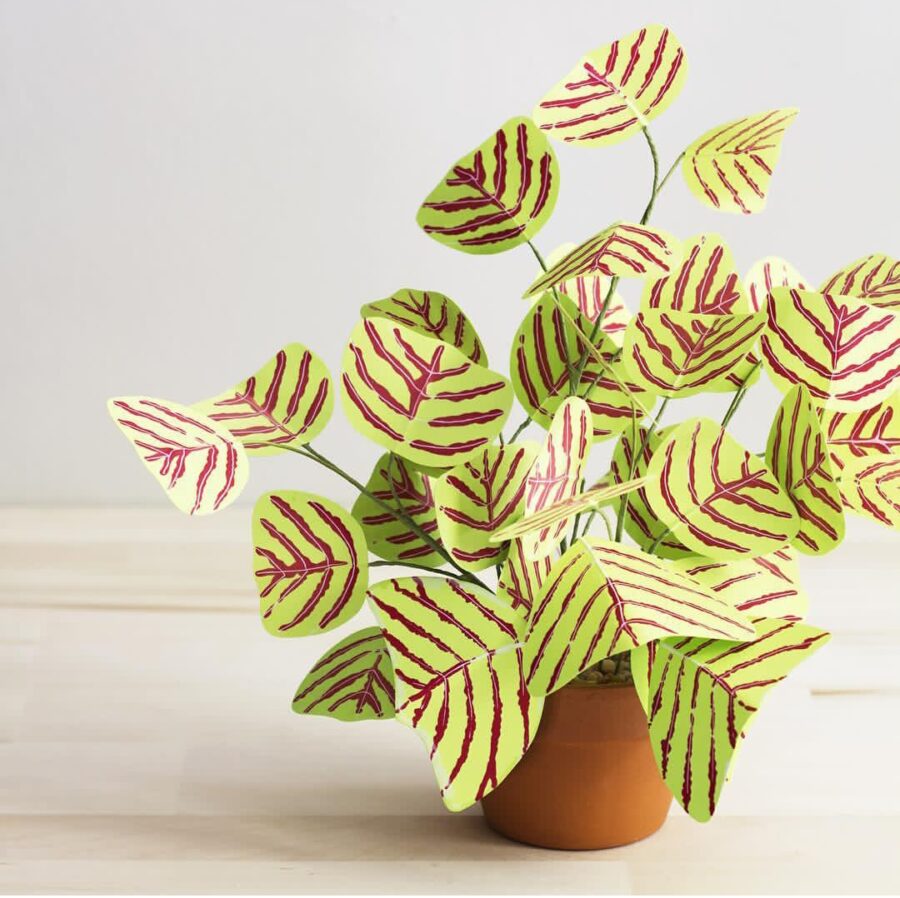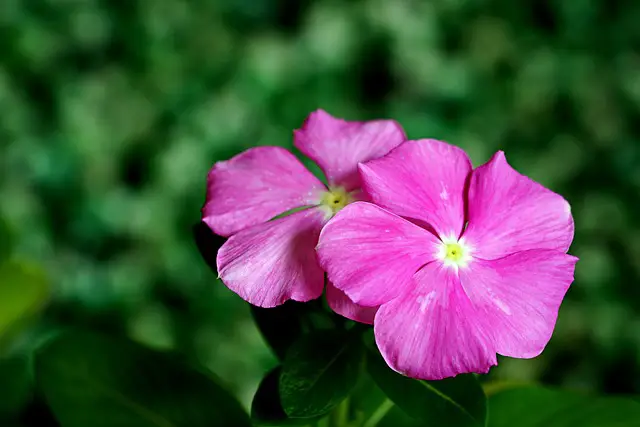Swallowtail Butterfly plant If you’ve been looking for the perfect indoor plant to bring life and color to your home, the swallowtail butterfly plant is the answer! With its vibrant foliage and unique shape, this showstopping plant is sure to make a statement in any room. But before you bring home your new swallowtail plant, it’s important to understand how to properly care for it so that it can thrive for many years. In this ultimate guide to caring for swallowtail plants, we’ll go over everything you need to know to keep your new houseplant looking its best.

What You’ll Need
Caring for a swallowtail plant requires the right tools and supplies to ensure that it grows healthy and strong. Here’s a list of the essential items you’ll need:
-A container or planter: This can be anything from a basic plastic pot to a fancy ceramic one, as long as it has good drainage holes and is large enough to accommodate the swallowtail’s growth.
–Potting soil: Any type of soil with excellent drainage will work.
–Fertilizer: A balanced fertilizer is recommended for keeping your swallowtail in tip-top shape.
–Tools: You’ll need pruning shears, trowels, and gloves to keep your plant well maintained.
–Watering can: To ensure that your swallowtail gets enough moisture without over-watering.
–A sunny spot: It’s best to put your swallowtail in a place that gets plenty of sunlight so it can flourish.
Location
When selecting a location for your Swallowtail Plant, you should consider its natural growth environment. The plant is native to regions of South America and Southeast Asia, so it prefers warm, humid climates. It is best grown in bright, indirect sunlight with some protection from direct sun, such as a north- or east-facing windowsill. If you live in a cooler climate, you may need to move the plant indoors during winter months.
It is important to keep in mind that this plant will require lots of humidity, so it should not be placed too far away from a water source or an area where misting can be done regularly. If possible, it is best to keep the plant in a room with a temperature between 60-75°F (15-24°C).
Soil requirements
When it comes to the soil for your swallowtail butterfly plants, the type of soil you use is important. For optimal growth, you should use a well-draining soil that is light and slightly acidic. Potting soil mixed with a good quality compost will provide the best growing environment for your plants. You can also add some perlite or pumice to help promote drainage and aeration. Be sure to avoid soils that are heavy or prone to becoming waterlogged as this can cause root rot and other issues for your plants.
Swallowtail butterfly Plant Fertilizer Need
Swallowtail butterfly plants are usually low maintenance and don’t require much fertilizer to thrive. However, a balanced, all-purpose fertilizer can be beneficial for their growth.
A balanced fertilizer is one that has equal amounts of nitrogen, phosphorus, and potassium, usually represented as N-P-K, for example, 10-10-10 or 20-20-20. These three elements are essential for healthy plant growth, and the ratio of each element will depend on the specific needs of the plant.
It’s best to apply fertilizer to swallowtail plants in the spring or early summer when they start to grow. You can mix the fertilizer into the soil around the plant or dilute it according to the instructions on the packaging and apply it as a foliar spray.
It’s also important to not over-fertilize, as this can lead to an excess of leaf growth and a decrease in flower production. It’s always better to under-fertilize than to over-fertilize
Watering requirements
This plant requires continually moist soil since it loves water. Every third to fourth day, use plenty of clean, filtered water to hydrate. Swallowtail butterfly plants, also known as swallowtail butterfly plants, are hardy perennials that typically grow well with moderate water needs. They generally prefer well-drained soil that is kept consistently moist but not waterlogged. During the growing season, it’s important to water the plants regularly, especially during periods of drought. However, you should also avoid over-watering, as this can lead to root rot.
It’s best to water the plants early in the day so the foliage has time to dry before nightfall, which can help prevent fungal diseases. In hot climates, it may be necessary to water the plants more frequently to keep the soil moist. In cooler climates, the plants may need less water.
How to Pruning a swallowtail plant
Pruning a swallowtail plant Pruning a swallowtail butterfly plant (also known as the butterfly bush) is important for its growth and overall health. Here’s how to prune a swallowtail butterfly plant:Timing: The best time to prune a swallowtail butterfly plant is in late winter or early spring, just before new growth begins.
This will ensure that the plant has time to recover and regrow before the growing season starts.Tools: Use clean, sharp pruning shears or loppers to avoid damaging the plant.Cut back hard: Cut back the stems of the swallowtail butterfly plant to just above the ground, removing all of the dead growth from the previous season.
This will encourage the plant to produce new, healthy growth.Shape the plant: After cutting back the dead growth, you can shape the plant to your desired size and shape. Prune any stems that are growing too tall, crossing over each other, or growing in an unwanted direction.Remove any damaged or diseased stems:
Check the plant for any stems that are damaged, diseased, or showing signs of pests and remove them.Repeat annually: Repeat this pruning process annually to keep the swallowtail butterfly plant healthy and looking its best.It’s important to note that if you want your swallowtail plant to produce flowers, you should avoid pruning it after early summer, as this can remove the buds that will produce flowers in the next season.
Guide on how to care and grow swallowtail butterfly plant (christia obcordata)
Pests and diseases Swallowtail Butterfly Plant and How to Fix
Swallowtail Butterfly Plant (Christia obcordata) is generally resistant to pests and diseases, but it can still encounter some issues. Here are common pests and diseases that may affect this plant and how to address them:
Pests:
Aphids: These small insects can cluster on the underside of leaves, sucking sap and causing leaf distortion and yellowing. Aphids can be managed by applying neem oil or insecticidal soap. An intense jet of water can also be used to squirt them off.
Spider Mites: These tiny pests can cause stippling on leaves and create fine webbing. Increase humidity around the plant by misting and regularly cleaning the leaves to discourage spider mites. In severe infestations, use insecticidal soap or neem oil.
Whiteflies: These small, white insects can be found on the undersides of leaves and fly up when disturbed. Utilise sticky yellow traps for tracking and managing whiteflies. Neem oil or insecticidal soap are further options.
Diseases:
Powdery Mildew: This fungal disease appears as a powdery white substance on leaves, stems, and flowers. Improve air circulation around the plant by spacing it properly and avoiding overhead watering. Treat with fungicidal sprays containing sulphur or potassium bicarbonate.
Root Rot: Overwatering can lead to root rot, causing the plant’s roots to become mushy and brown. Use well-draining soil and pots with drainage holes to ensure adequate drainage. To avoid root rot, let the soil somewhat dry out in between waterings.
Leaf Spot: This fungal disease causes brown or black spots on leaves, eventually leading to leaf drop. Remove and destroy infected leaves, and avoid overhead watering to prevent the spread of spores. Apply fungicidal sprays if necessary.
Regularly inspecting your Swallowtail Butterfly Plant for signs of pests and diseases and promptly addressing any issues can help keep it healthy and thriving. Additionally, maintaining proper cultural practices, such as watering, lighting, and ventilation, can help prevent pest and disease problems.
Guide on how to care and grow swallowtail butterfly plant (christia obcordata)
Propagating Swallowtail Plant
How to propagate swallowtail plant
Swallowtail butterfly plants can be propagated in several ways, including seeds, cuttings, and division. Here’s how to propagate swallowtail plants using each method:
Seeds: The easiest way to propagate swallowtail butterfly plants is by planting seeds. The seeds should be sown in a well-draining seed compost and kept moist. They should be placed in a bright, warm location and covered with a layer of horticultural grit. Keep the compost moist and in a few weeks, the seeds will germinate.
Cuttings: Cuttings can also be taken from mature swallowtail plants and rooted to create new plants. To do this, take a cutting of about 5-10cm in length from a healthy, non-flowering stem.
Remove the lower half of the cutting’s leaves before dipping the cut end in rooting hormone. Place the cutting into a well-draining compost mixture and water it thoroughly.
Cover the cutting with a plastic bag to create a mini greenhouse and place it in a bright, warm location. Check the cutting regularly and water it as necessary to keep the compost moist.
Division: Swallowtail butterfly plants can also be propagated by dividing clumps of mature plants. This method is best done in spring or early autumn, when the plant is dormant.
Carefully dig up the clump and separate it into smaller sections, each with a good root system. Replant each section into a well-prepared bed of soil and water well.
Regardless of the method you choose, it is important to provide your new swallowtail plants with adequate moisture, light, and a well-draining soil mixture to ensure successful growth and establishments
FAQ
How do you take care of Christia Obcordata?
Christia Obcordata, also known as the Butterfly Plant, requires bright indirect light, regular watering to keep the soil evenly moist (but not soggy), and moderate humidity. It prefers temperatures between 65-80°F (18-27°C) and benefits from occasional misting. Fertilize the plant monthly during the growing season with a balanced houseplant fertilizer.
Are swallowtail plants edible?
Swallowtail plants are not typically consumed as food. However, the term “swallowtail” generally refers to a family of butterflies known for their distinctive tail-like projections on their hindwings. Some species of swallowtail butterflies have caterpillars that feed on specific host plants, which can be consumed by the caterpillars but not usually by humans.
How is a swallowtail plant cared for?
Swallowtail plants, or Papilio machaon, refer to a specific species of butterfly, rather than a plant. If you’re referring to a specific plant, please provide its botanical name or more information to assist you better.
Where should a butterfly bush be planted?
Butterfly bushes, or Buddleja, thrive in full sun, so it’s best to plant them in a location that receives at least 6 hours of direct sunlight per day. They also prefer well-draining soil and can tolerate a range of soil types. Make sure to provide ample space for their growth as they can become quite large.








